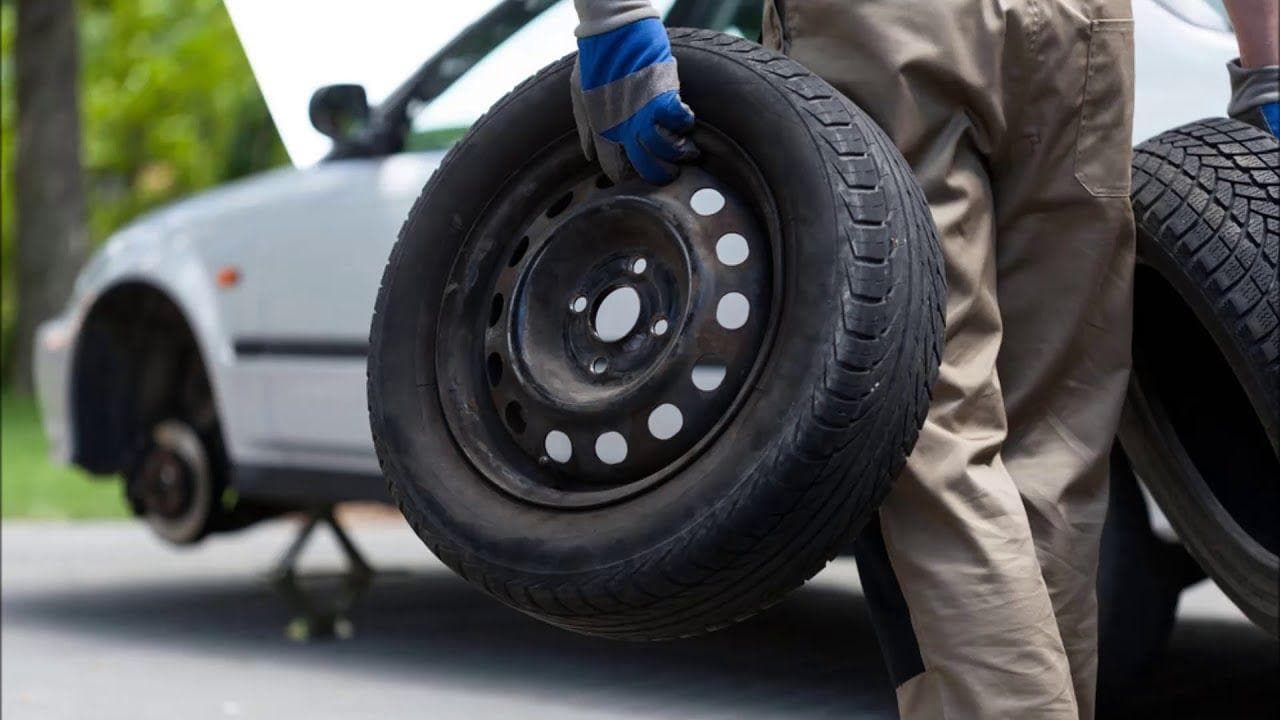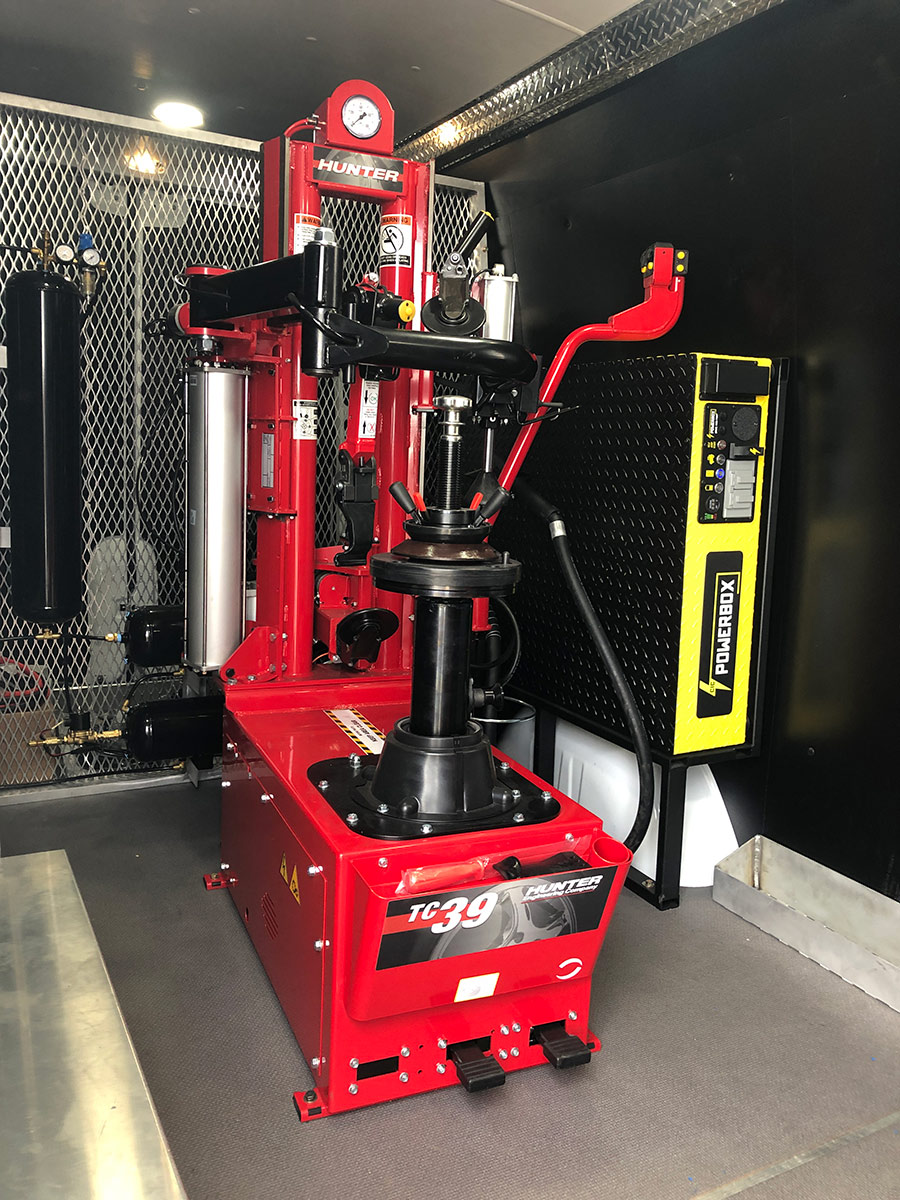Costs Mobile Tire Replacement Las Vegas - Quality Ensured
Costs Mobile Tire Replacement Las Vegas - Quality Ensured
Blog Article
Tire Solution: Proven Techniques for Ideal Tire Maintenance and Treatment
From making certain correct tire stress to normal turning and placement, there are proven techniques that can considerably prolong the life-span of your tires and enhance general driving experience. Allow's delve right into the world of tire service and uncover the secrets to maintaining your tires in top-notch shape for the long haul - Flat Tire Repair Las Vegas.
Significance of Tire Stress
Correct tire stress is a vital consider making sure optimum car efficiency and security on the roadway. Keeping the recommended tire stress degrees offered by the maker supplies various benefits. To start with, appropriate tire stress promotes far better gas effectiveness, as under-inflated tires can lead to boosted rolling resistance, creating the engine to function tougher and eat more gas. Proper tire stress guarantees even step wear, improving tire longevity and conserving money in the long run by delaying the need for early replacements. Furthermore, properly inflated tires add to enhanced handling and braking capabilities, critical for secure driving in numerous roadway conditions. Over-inflated tires, on the various other hand, can cause lowered grip and a harsher ride. Conversely, under-inflated tires are prone to overheating, which can cause accidents and blowouts. Frequently inspecting and readjusting tire pressure, especially previously long journeys, is a basic yet efficient means to enhance automobile efficiency, extend tire life expectancy, and prioritize safety and security when traveling.
Tire Rotation Standards
When taking into consideration tire turning guidelines, it is necessary to understand the significance of this maintenance job in making best use of tire life expectancy and maintaining optimal car efficiency. Tire turning involves altering the position of each tire on a car to make certain even tread wear. Front tires have a tendency to use much more quickly than rear tires due to guiding pressures, making normal rotation vital for balanced wear patterns. The advised turning pattern differs depending upon whether a car is front-wheel, rear-wheel, all-wheel, or 4x4. Normally, tires should be turned every 5,000 to 7,500 miles, or as recommended in the lorry handbook. Neglecting tire rotation can lead to unequal wear, impacting handling, grip, and possibly compromising lorry safety. By sticking to appropriate turning guidelines, vehicle drivers can prolong the life of their tires, enhance gas efficiency, and boost overall driving experience. Regular turning is a simple yet reliable maintenance method that adds significantly to tire longevity and automobile efficiency.

Benefits of Wheel Placement
Guaranteeing correct wheel positioning after tire rotation is critical for keeping balanced wear patterns and making best use of vehicle efficiency. In addition, appropriate wheel alignment aids to prolong the lifespan of your tires. Misaligned wheels can cause irregular tire wear, leading to early tire substitute and raised upkeep prices.

Tire Tread Depth Check
Performing visit this page a routine evaluation of tire step deepness is necessary for keeping risk-free driving problems and lengthening the lifespan of your tires. The step on your tires plays an important duty in offering traction, specifically in unsafe or damp problems. To check your tire walk deepness, you can use a step depth scale or the cent examination. The suggested walk depth is at the very least 2/32 of an inch. If the tread depth is listed below this threshold, it is time to change your tires to ensure ideal efficiency and safety and security on the roadway. Irregular tread wear can show problems with tire positioning, suspension, or pressure, highlighting the significance of regular walk deepness checks. Ignoring to keep track of and preserve appropriate tread deepness can result in decreased grip, longer stopping distances, and a raised threat of hydroplaning. By including tire walk depth look into your regular maintenance schedule, you can drive with self-confidence recognizing that your tires remain in leading problem.
Seasonal Tire Inspection
Seasonal tire assessment is a basic element of tire upkeep that ensures tires are all set to encounter the challenges posed by different climate conditions. In preparation for winter season, it is crucial to check the tire pressure routinely as chilly temperature levels can create tire stress to drop. By performing routine seasonal tire examinations, chauffeurs can lengthen tire lifespan, enhance gas efficiency, and most importantly, ensure a safe and secure driving experience in differing climate problems.
Verdict
In conclusion, keeping proper tire stress, rotating tires frequently, aligning wheels correctly, keeping track of tread depth, and carrying out seasonal examinations are vital techniques for optimum tire care. By adhering to these proven techniques, motorists can guarantee their tires last much longer, carry out far better, and contribute to overall automobile safety and security. It is crucial to focus on tire maintenance to stop mishaps, boost fuel performance, and lengthen the life-span of tires.
Ample tire stress advertises far better gas effectiveness, as under-inflated tires can lead to enhanced rolling resistance, triggering the engine to function tougher and take in more gas.When taking into consideration tire turning standards, it is important to understand the relevance of this maintenance job in making the most of tire lifespan and maintaining why not check here optimal car performance. Seasonal tire assessment is a fundamental element of tire maintenance that guarantees tires are all set to encounter the obstacles presented by different weather conditions. By performing routine seasonal tire examinations, vehicle drivers can extend tire life-span, improve gas effectiveness, and most notably, make certain a safe driving experience in varying weather condition conditions.
In final thought, preserving appropriate tire pressure, rotating tires consistently, lining up wheels correctly, keeping track of step depth, and conducting seasonal evaluations are important techniques for optimal tire care.
Report this page